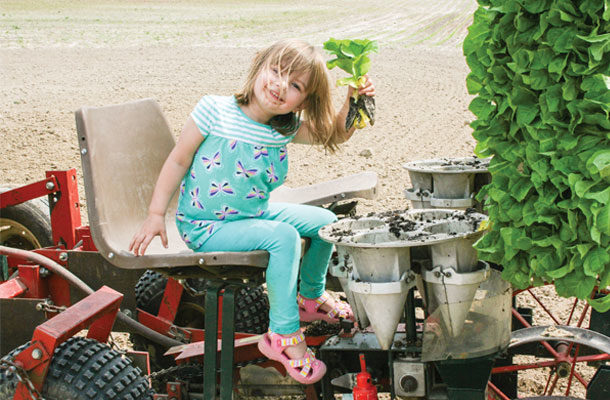We only plant 5 acres, for reasons I’ll explain below. Some farms have invested in harvesting equipment that allows them to run much larger operations, but we still keep to the traditional ways.
Nearly every step of the growing season requires manual labour. For planting, each plant is dropped into the planter by hand. Spraying and cultivating can be done with equipment – but then comes topping, when the flower is ripped from the top of the plant by hand.
Harvest is the most intense step when each plant is hand-cut, piled and strung one at a time onto a lath; each lath of four to five plants is then loaded onto a wagon and hauled to a shed where it is hung.
The work does not stop there. Over the winter months, each lath is taken down, and each leaf is stripped by hand one at a time to be stacked, packed and bundled.
Now I stand by the fact that tobacco is bad for human health – with the exception of researchers using the plant within the pharmaceutical industry to create medicines that will help people. Despite its highly negative characteristics, what I love about tobacco is the culture it brings to my farm and my family.
Today, on our four-row setter, there will be fathers, sons, cousins and friends. They will sit side-by-side and work until the job is done. When it is done here, they will move on to the next person’s farm and do the same. This repeats for harvest.
At some point, we will all gather together for a farm feast, enough to fill a stomach and then some, making it hard to return to work in the afternoon. Over lunch, we will share stories and memories from one crop to the next.
Best of all, we are showing my children what it means to work together. To me, this is the culture that flows through agriculture. It is always there, but sometimes it is more apparent.
Bob Milligan writes about knowing the “why” to understand the vision of your business.
Click here to read this article.
Our small farm was started as the foundation for what hopes to be a greater farm business someday. To do this, we need to make sure every aspect is as profitable as possible. Our tobacco crop yields more per acre than corn or soybeans ever could.
We also wanted to farm to teach our children the same lessons we learned by growing up with farming experiences. As I mentioned earlier, our efforts with tobacco provide some of those examples.
Those are some of my whys for building a farm business. Have you ever sat down to define your whys? If you are not the one who started the farm, do you know the reason it was started?
If not and you are able to do so, I encourage you to have a nice chat with those who came before you to learn more about your farm’s history. Knowing that why, along with your own, might just help you further define your purpose and vision for what you do each day. PD
PHOTO: Photo by Karen Lee.

-
Karen Lee
- Editor
- Progressive Dairyman
- Email Karen Lee










